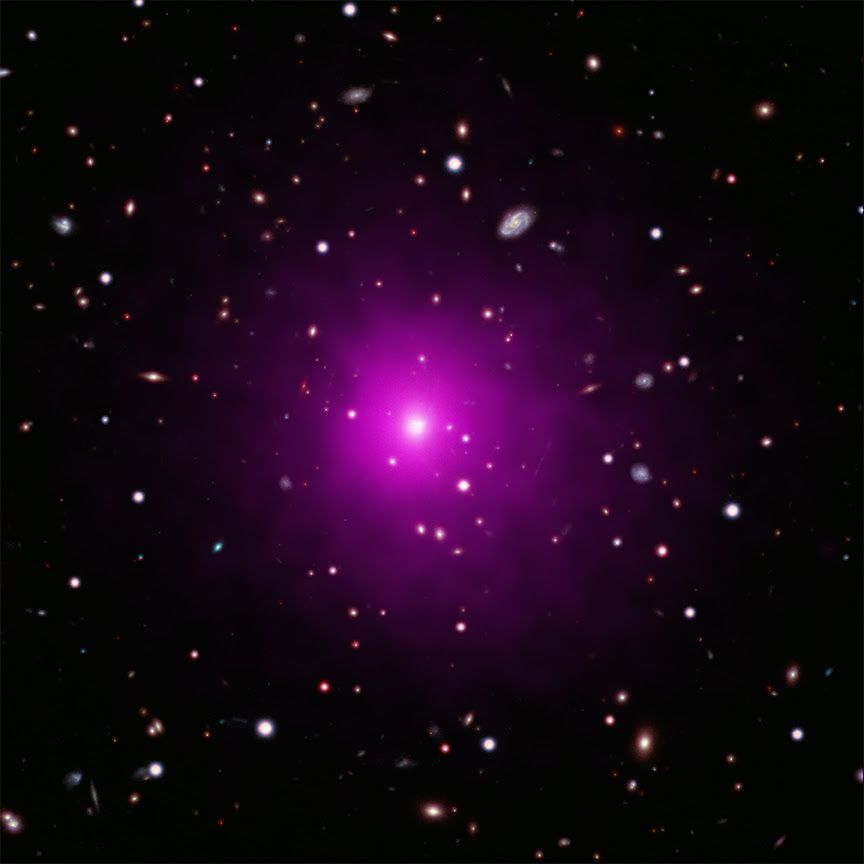enormous Black hole It still slips through astronomers‘ nets.
Supermassive black holes are thought to lie in the cores of most, if not all, galaxies. Our Milky Way has a mass equivalent to 4 million suns, for example, and M87’s – the Only a black hole was directly photographed Tipping the balance at 2.4 billion solar masses.
The large galaxy at the core of the Abell 2261 cluster, located about 2.7 billion light-years from Earth, should contain a larger central black hole – a light-consuming monster weighing up to 3 billion to 100 billion suns, astronomers estimate from the galaxy’s mass . But the strange thing has escaped detection so far.
Related: The first historical images of a black hole show that Einstein was right (again)
For example, researchers have previously researched the flow of X-rays from the center of the galaxy, using data collected by NASA Chandra X-ray Observatory In 1999 and 2004. X-rays are a possible black hole signature: When material falls into the black hole’s gap, it accelerates and heats tremendously, emitting a lot of high-energy X-ray light. But this hunt came to nothing.
Now, a new study has done a deeper search of X-rays in the same galaxy, using Chandra observations from 2018. This new effort has not just looked at the center of the galaxy; It also looked at the possibility that a black hole might have fallen in the direction of outlying regions after a monster Hungarian merger.
When black holes and other massive objects collide, they cause ripples in space-time known as Gravitational waves. Scientists say that if the emitted waves were not the same in all directions, they could end up pushing the merging supermassive black hole away from the center of the newly enlarged galaxy.
These „boomerang“ black holes are purely virtual creatures. No one has finally discovered it yet. In fact, “It is not known whether supermassive black holes even come close enough to produce gravitational waves and merge; so far, astronomers have only investigated the merging of much smaller black holes,” NASA officials wrote in Statement about the new study.
And they added, „The discovery of the bounce of supermassive black holes would encourage scientists to use and develop observatories to search for the gravitational waves resulting from the merging of supermassive black holes.“
The researchers said the central galaxy in Abell 2261 is a good place to look for such a unicorn, as it bears many potential signs of a dramatic merger. For example, Notes Hubble Space Telescope And the Subaru Earth Telescope shows that its core, the region of highest stellar density, is Much larger than expected For a galaxy its size. NASA officials wrote that the densest stellar spot is located about 2,000 light-years from the galactic center – and it is „remarkably distant.“
In the new study, a team led by Kayhan Gultekin from the University of Michigan found that the most intense concentrations of hot gas were not in the central regions of the galaxy. But the Chandra data did not reveal any important sources of X-rays, either in the core of the galaxy or in large clusters of distant stars. So the mystery of the missing supermassive black hole still remains.
This mystery can be solved by Hubble’s successor – big and powerful for NASA James Webb Space TelescopeWhich is scheduled to be launched in October 2021.
NASA officials wrote that if James Webb did not observe a black hole in the core of the galaxy or in one of its largest stellar masses, „the best explanation is that the black hole has bounced well outside the galactic center.“
The new study has been accepted for publication in the Journal of the American Astronomical Society. You can read it for free on the online prepress site arXiv.org.
Mike Wall is the author ofAbroad„(Grand Central Publishing, 2018; illustration by Karl Tate), a book on the search for alien life. Follow him on Twitter @michaeldwall. Follow us on Twitter @Spacedotcom or Facebook.

„Total Social Media Ninja. Introvertiert. Schöpfer. TV-Fan. Preisgekrönter Unternehmer. Web-Nerd. Zertifizierter Leser.“


